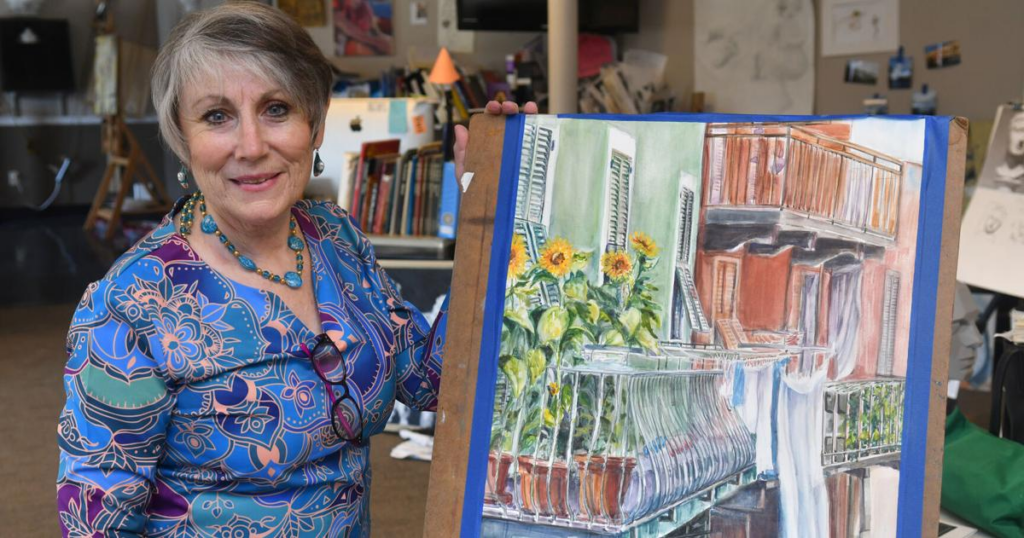After 30 years in the artistic community of Quad-Cities, Pat Bereskin began to contemplate his legacy. She runs an art gallery, creates her own works, and helps cultivate the talents of young artists through her art academy. Looking ahead, she wanted to know what she could step back from and what she wanted to hold on to.

Which Bereskin has led to his learnings in collaboration with the Figge Museum of Art in Davenport and Family Museum in Bettendorf to create new art programs in each organization, presenting new opportunities for youth in the Quad-Cities to discover and develop their skills as artists.
“I thought, well, if anything we’ve learned over the past two years is to seize the moment,” Bereskin said. “So that’s what I did.”
The Beréskin Art Academy is moving its classes to the two museums, where students of different ages and skill levels will learn art in all kinds of mediums and styles. The BERESKIN gallery and the Academy of Fine Arts The building will close on August 1, with the gallery moving to online viewing only, and classes at the Figge and Family Museum will begin later in the month.
People also read…
The Family Museum, 2900 Learning Campus Drive, Bettendorf, will house the Beginner Art Academy, for students in the early primary grades. The Family Museum’s director of culture and recreation, Kim Kidwell, said most classes will take place during the school year, although they are also working on eight-week courses.
“Any time we collaborate with other cultural institutions and other museums, it’s really a win for the community,” Kidwell said. “We are really happy to be part of.”
The Family Museum’s art programming currently includes periodic four- to six-week art classes and summer camps. Kidwell said the COVID-19 pandemic has resulted in understaffing at the museum, forcing employees to span multiple departments.
With Bereskin and his team of instructors taking care of the classes they bring to the Figge and Family Museum, Kidwell said museum staff will be able to focus more fully on other programs.
“It’s just awesome because we’ll be able to provide even more than what we had before with his instructors in our space,” Kidwell said.
The Figge Museum of Art will use its studio spaces to house the new Figge Art Academy, offering classes for intermediate and advanced art students from elementary through high school.
Figge CEO and Executive Director Michelle Hargrave said the art museum‘s education department is the museum’s largest area and that education is one of its four main pillars in its mission to connecting people and art. Le Figge offers year-round classes for all ages and skill levels, from one-day workshops to classes that dive deep into the artwork.
The Bereskin Classes will create a new facet of the program, including a new clay lab, and will enable the museum to fulfill its commitment to developing studio classes.
Hargrave said Bereskin has had a significant impact on the local arts community over the years and is thrilled to facilitate the artist’s work with budding artists.
“To have someone like that at Figge teaching the students, she’s definitely going to be a force to be reckoned with,” Hargrave said.
Bereskin Gallery & Art Academy management had Bereskin on hand seven days a week, she said, leaving no time for other activities. The gallery’s transition to a fully online format and collaboration with the Figge and Family Museum will free up a few days for Bereskin to spend with family and friends, travel, and focus on his own art.
Students interested in joining a class will meet with Bereskin to show off their recent work and discuss the types of art that interest them, so she can learn where they would fit best. More information on how to join either art program will be available online at the fig and family museum websites.
“I’m so looking forward to it, and I can’t wait to see what it means for Quad-Cities to have all of these art classes and programs available,” Bereskin said.